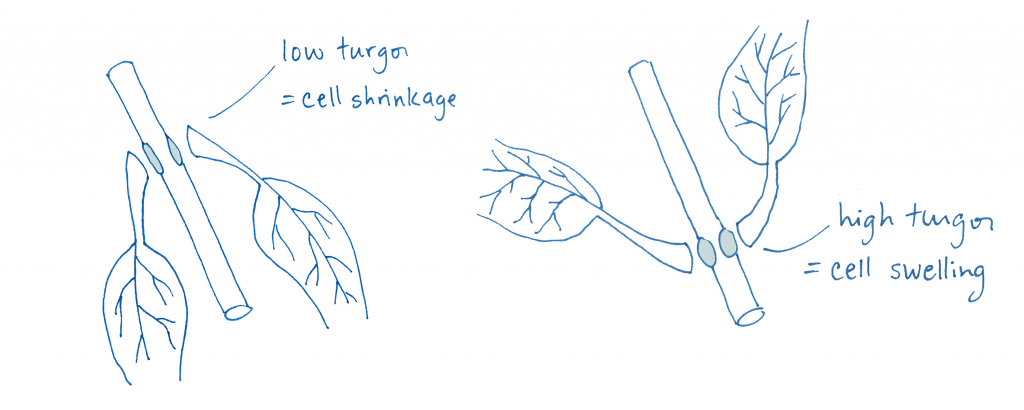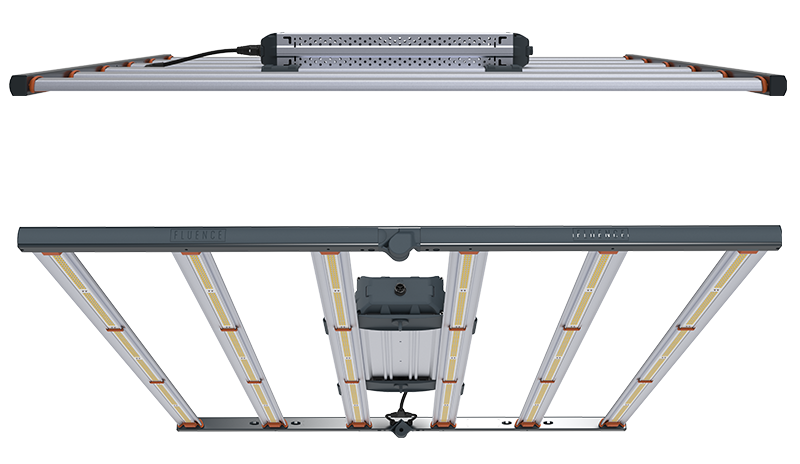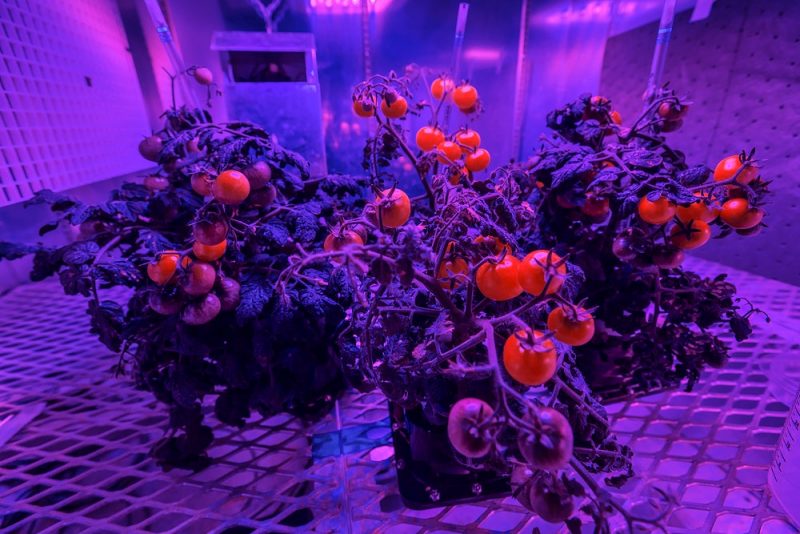In general, plants are rooted and unable to move from place to place by themselves. However, some plants are able to move in certain ways. For example, some plants open their leaves in the daytime and ‘sleep’ at night with their leaves folded. Have you ever noticed this among your cannabis plants? When the lights are on, your cannabis plants are nice and perky, but a few hours before the lights go out, the leaves start to droop? They don’t look bad – they just droop. And then the next day, they are back up again. Why is this?
These movements are known as nastic movements. Nastic movements are plant movements that occur in response to environmental stimuli such as light, temperature, humidity, chemicals, and touch. Depending on the species, these movements can happen to different parts of the plant – leaves, stems, flowers, etc. An example you may be familiar with is venus fly trap plants. Their traps, which are highly modified leaves, have hairs on the surface to detect physical movement. When the hairs are triggered by an insect, the two halves of the trap close together, capturing the insect.
Cannabis plants can move their leaves in response to lights. Leaf movements are known as foliar (leaf) nyctinasty [1]. During the day, the leaves are in a more or less horizontal position and at night, the leaves are more vertical. It’s not just cannabis plants that do foliar nyctinasty. Over 200 different genera of plants display leaf movements and most of them are in the legume (bean) family. There are also several different tactics a plant can use to move it’s leaves from a horizontal to a vertical position and vice versa. Leaves may rise up, fall down, twist to the side, or even fold in half [1].
What are the Advantages of Leaf Drooping?
Why would a plant spend energy moving its leaves up and down? And yes – it does cost the plant energy to move the leaves up and down! Movement is, after all, a form of work, and work requires energy! Since most plant species don’t do these movements, some scientists think they are not critical for plant survival [1]. Instead, leaf drooping is probably just a useful perk for those plants that have the ability.
During the day, many plants will hold their leaves in a horizontal position (or roughly horizontal position). This position allows the leaf to capture the maximum amount of light for photosynthesis [1]. For many plants, horizontal, non-overlapping leaves are ideal for intercepting the greatest amount of light.
The real mystery is — why do the leaves droop at night? Over the years, scientists have proposed several theories to explain this phenomenon. Darwin suggested that drooping could help keep plants warm at night. Drawing the leaves closer together can reduce the exposure of the leaf to the cold night sky. This is similar to a group of people huddling together to keep warm. One experiment showed that vertical leaves can keep a plant about 1°C warmer than if the leaves are in a horizontal position [2]. However, aside from this early experiment, not many other experiments have confirmed these results. This theory still needs further testing!
Another hypothesis is that when leaves droop, excess water rolls off the leaf. Research shows that water droplets on the surface of leaves can reduce photosynthesis during the very early morning before the leaf surface dries completely. Reducing leaf water may also help prevent the growth and spread of pathogens, like powdery mildew [1]. However, once again, this theory needs further testing.
The theory with the most evidence says that leaf drooping could prevent herbivory from small animals and insects. This is because a vertical leaf may be harder for an animal or insect to access and eat. A vertical leaf might also give less shelter for the herbivore and so the herbivore might become dinner for another animal [1].

Figure 1: Turgor change in cells at the leaf base causes the leaves to move up and down.
How does Leaf Drooping Happen?
Leaf drooping is regulated by internal or external processes. Like humans, plants have circadian clocks that help them regulate their processes. As mentioned above, leaf movements can occur as a result of changes in the external environment. And in other cases, leaf drooping is regulated by both internal and external processes.
The mechanics of leaf drooping varies from species to species. In most cases, a change in position occurs when cells at the base of the leaf (the “motor cells”) change shape. Motor cells may swell or shrink by regulating the amount of water inside them. This swelling and shrinking is known as turgor (Figure 1). Research shows that cell swelling and shrinkage typically involves potassium ions. When a large amount of potassium ion move across the cell membrane it is followed by a massive flux of water, which results in swelling (water moves in) or shrinking (water moves out) of these cells. Potassium ion channels are the pumps that control the amount of potassium moving in or out of a cells, however researchers are still trying to understand how this works. Additional chemicals, like calcium can also be involved, but the exact mix of chemicals is species-specific and dependent on the type of movement – up, down, twisting, or folding [1].
Plant movement is still an active area of research and further study is needed to understand how leaf movements may benefit plants. So if you notice your cannabis plants droop a bit before bedtime, know that they are just going through their standard leaf movements. You can go ahead and give them a goodnight kiss knowing they will perk back up in the morning.
Learn More
- Minorsky, P. V. (2018). The functions of foliar nyctinasty: a review and hypothesis. Biological Reviews.
- Darwin, C. (1880). The Power of Movements in Plants. London: John Murray.
- Hart, J. W. (1990). Tropisms and Other Forms of Plant Movement. In Plant Tropisms and Other Growth Movements (pp. 1–22).
- Ueda, M., & Nakamura, Y. (2007). Chemical basis of plant leaf movement. Plant and Cell Physiology, 48(7), 900–907.




